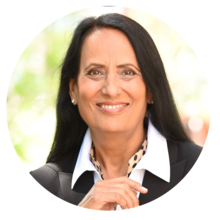About this Presentation
Eli decides to use the session as a question and answer session. James Holt asks: what is different about TOC? Eli presented a two-page document describing Viable Vision (bring the company to have in less than 4 years a net profit equal to sales). What is currently blocking the company? Eli describes complex systems and inherent simplicity. What is the minimum number of points that one has to change to impact the whole system? If only one point exists then the system is an easy system to impact. The process to capitalize on this fact is the five focusing steps. What do you do when the constraint is outside your area i.e., market constraints? You provide 100% customer service! If you run into a problem in applying the five focusing steps then you use the thinking processes to identify, define and solve the problem. Eli then asks James to come forward to have a dialog. James discusses the problem of trying to implement TOC in a very large organization (Boeing) when he only has students in various departments and functions and cannot take a holistic view of the organization. Identifying the constraint and finding the core problem are very different. Boeing's constraint is they have a limited market. When do you use the thinking processes? When you have problems implementing one of the five steps. Suppose that one has access to a subsystem only of the larger system. The question is if you have access to only a subsystem can you improve the system. What are the performance, the goal of the subsystem that will help the system as a whole? Do not let the TP be used for procrastination. The key is the five focusing steps. If you don't have a clue as to the constraint then use the TP. The term policy constraint causes this whole problem.
What Will You Learn
To help you get the most value from this session, we’ve highlighted a few key points. These takeaways capture the main ideas and practical insights from the presentation, making it easier for you to review, reflect, and apply what you’ve learned.

Instructor(s)
Eliyahu M. Goldratt

Ms Alka Wadhwa
Alka Wadhwa is an experienced consultant and process improvement expert with over 24 years of expertise in the Theory of Constraints (TOC), Lean Six Sigma, and organizational performance optimization. She has successfully led projects in healthcare, financial services, and manufacturing, driving significant improvements such as a 67% boost in hospital operations and a 140% increase in outpatient visits.
Previously, Alka Wadhwa spent 17+ years at GE Global Research Center, where she led initiatives to enhance various GE businesses through advanced technologies, process redesign, and system optimization. Founder of Better Solutions Consulting, LLC, she specializes in using TOC, Six Sigma, and data analytics to streamline operations and build high-performance teams.
Her work has earned her multiple accolades, including the Empire State Award of Excellence in healthcare.

Dr Gary Wadhwa
Dr. Gary Wadhwa is a Board Certified Oral & Maxillofacial Surgeon with extensive experience in the field. He completed his Oral & Maxillofacial Surgery training at Montefiore Hospital, Albert Einstein College of Medicine in Bronx, NY, and has served as an Attending at prestigious institutions like St. Peters Hospitals, Ellis Hospital, and Beth Israel Hospital in NY. With a career spanning over two decades, he was the former CEO and President of a group specialty practice in NY from 1994 to 2015. Dr. Wadhwa holds an MBA from UT at Knoxville, TN, and has undergone additional training in System Dynamics at MIT, Health System Management at Harvard Business School, and Entrepreneurship and healthcare innovations at Columbia Business School. Committed to expanding access to Oral & Maxillofacial Surgery care, he is currently engaged in a meaningful project to provide healthcare services to underserved populations in inner city and rural areas through non-profit Community Health Centers.
